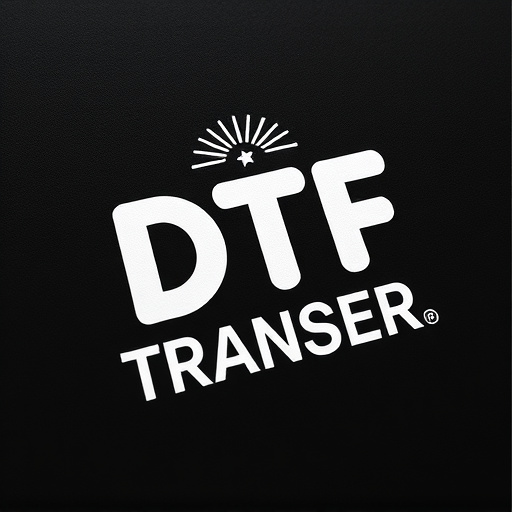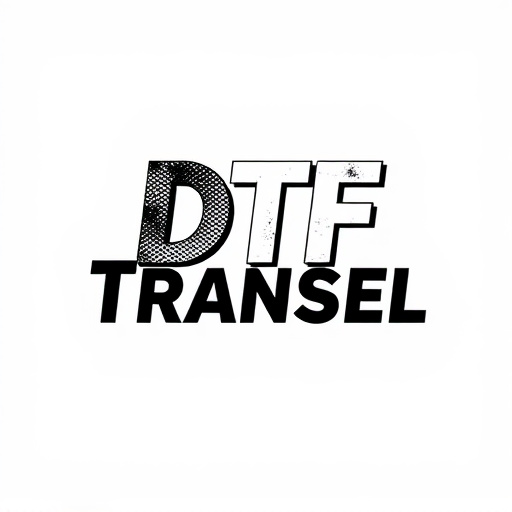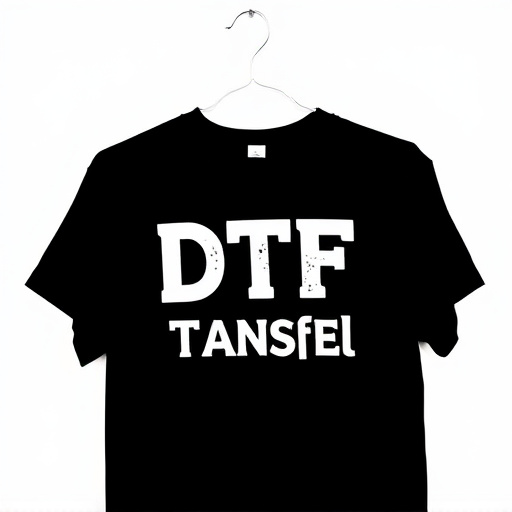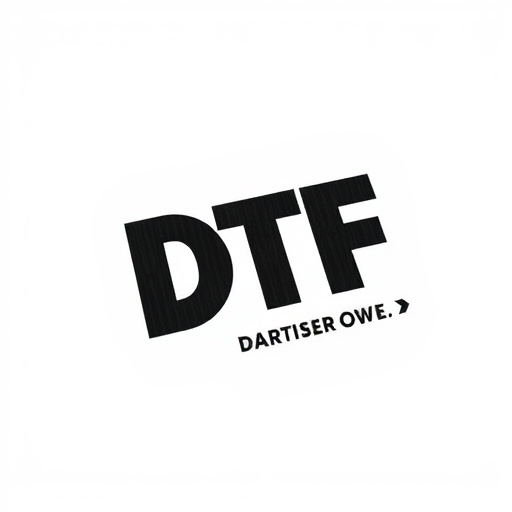Direct to Fabric (DTF) printing is revolutionizing specialty clothing production with high-quality, vibrant prints on diverse fabrics. DTF Transfers, created through a meticulous process involving design software and precise printing techniques, offer intricate patterns and rich colors. Designers can seamlessly integrate creative concepts onto cotton tees to polyester jackets, streamlining production and saving costs. Best practices include proper design preparation, fabric selection, color matching, printer calibration, and heat/pressure application for crisp, permanent DTF prints. DTF's versatility caters to bulk orders and individual styles, enhancing both aesthetic appeal and functionality in clothing applications.
Discover the world of DTF Transfers and their transformative power in the realm of specialty clothing. This innovative printing technique offers unparalleled customization potential, allowing designers to create unique, high-quality garments with intricate DTF Prints. From understanding the fundamentals of DTF Transfer technology to exploring its numerous advantages and optimal applications, this article demystifies the process, guides you in choosing the right materials, and shares best practices for achieving flawless DTF prints.
- Understanding DTF Transfers: A Brief Overview
- Advantages of DTF Printing for Specialty Clothing
- The Process: From Design to Application
- Choosing the Right DTF Transfer for Your Fabric
- Best Practices for Successful DTF Prints
- Popular Applications: Where DTF Transfers Shine
Understanding DTF Transfers: A Brief Overview

DTF Transfers, or Direct to Fabric (DTF) transfers, are a cutting-edge printing technique revolutionizing the way we personalize specialty clothing items. Unlike traditional printing methods that often require multiple steps and can be time-consuming, DTF offers a direct and efficient approach to applying designs onto various fabrics. This technology uses a special ink that is pressed directly onto the fabric’s surface, creating vibrant and durable DTF prints. The process involves a precision-cut film that carries the design, which is then transferred onto the garment, enabling intricate and detailed patterns.
With DTF Printing, designers and businesses can effortlessly bring their creative visions to life on a variety of clothing types, from t-shirts and hoodies to caps and bags. Its versatility allows for unique customization options, catering to both small-scale artisans and large-scale fashion houses. This modern method ensures that the final product boasts rich colors, crisp lines, and a soft handfeel, making it a preferred choice for those seeking high-quality, personalized clothing items.
Advantages of DTF Printing for Specialty Clothing
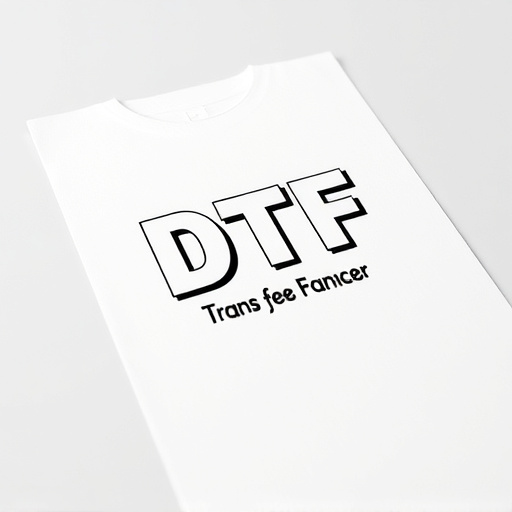
Direct-to-fabric (DTF) printing offers a plethora of advantages for specialty clothing items. One of its key benefits is the ability to produce high-quality, vibrant prints on various fabrics, ensuring that intricate designs and detailed graphics can be seamlessly integrated into clothing pieces. This technique allows for exceptional color accuracy, making it ideal for showcasing artistic visions and brand identities. DTF Transfer, a cutting-edge application method, enables precise placement of prints, catering to the unique demands of specialty clothing designers.
Furthermore, DTF Printing is versatile and efficient. It can be used on a wide range of fabrics, from cotton tees to polyester jackets, allowing for customization across different garments. The direct printing approach eliminates the need for screens or plates, streamlining production time and making it cost-effective for small batches or one-off pieces. This technology has revolutionized the way specialty clothing is produced, empowering designers to bring their creative concepts to life with ease.
The Process: From Design to Application

The process of creating and applying DTF Transfers to specialty clothing items is a precise art that involves several key steps. It begins with design creation, where artists use graphic design software to craft intricate and visually appealing images or text. These designs are then prepared for printing by setting the correct color profiles and resolutions to ensure high-quality output.
Once the design is ready, it undergoes the DTF Printing process. This involves using a specialized machine that applies heat and pressure to transfer the printed image onto a transparent film. The film acts as a carrier, allowing for precise placement on various clothing surfaces. After printing, the film is carefully cut to match the design, ensuring no unwanted edges or imperfections. Finally, the DTF Transfer is carefully applied to the desired garment, whether it’s a t-shirt, hoodie, or any other specialty item, creating a durable and vibrant print that enhances the overall aesthetic appeal of the clothing.
Choosing the Right DTF Transfer for Your Fabric

When selecting a DTF (Direct to Fabric) transfer for specialty clothing items, understanding your fabric type is paramount. Different fabrics have distinct properties that influence print quality and adhesion. For instance, cotton offers excellent absorbency, making it ideal for vibrant DTF prints, while polyester’s smooth surface requires specialized inks for optimal results. Consider the material’s texture, porosity, and stretch to ensure the chosen DTF transfer seamlessly merges with the garment.
Additionally, fabric color plays a crucial role. Lighter fabrics may demand lighter ink colors to prevent overpowering the design, whereas darker cloths can accommodate bolder, richer hues. Keep in mind that pre-treating the fabric and using suitable inks specific to DTF printing are essential steps for achieving long-lasting, crisp DTF prints.
Best Practices for Successful DTF Prints

To achieve successful DTF (Direct to Fabric) prints on specialty clothing items, a few best practices should be followed. First, ensure your design is ready for printing; this includes high-resolution files with proper color profiles and any necessary vectorization to prevent pixelation. Using the right materials is equally important; choose DTF transfer papers that are compatible with the fabric type, ensuring optimal adhesion and long-lasting prints.
The printing process itself requires careful attention. Calibrate your printer according to the manufacturer’s instructions for accurate color reproduction and consistent print quality. Maintain regular maintenance of your printer to avoid clogs or misalignments. After printing, carefully apply heat and pressure to the transfer paper, following recommended settings based on fabric type, to achieve a crisp, permanent DTF print.
Popular Applications: Where DTF Transfers Shine

In the realm of specialty clothing, DTF (Direct to Fabric) transfers have emerged as a game-changer. Their popularity lies in their ability to produce vibrant, durable prints on a variety of fabrics, from cotton tees to silk scarves. DTF Printing offers a unique advantage over traditional methods by enabling intricate designs with fine details and rich colors that remain fast to the fabric even after multiple washes.
This technology is particularly notable in applications where aesthetics meet functionality. Think custom team uniforms, where DTF prints can showcase logos and numbers with clarity; or fashion items where designers use DTF transfers to add seasonal patterns or limited-edition artwork. The versatility of DTF Transfers allows for personalized, on-demand production, catering to both bulk orders and individual expressions, thus revolutionizing the way we adorn our clothing.


